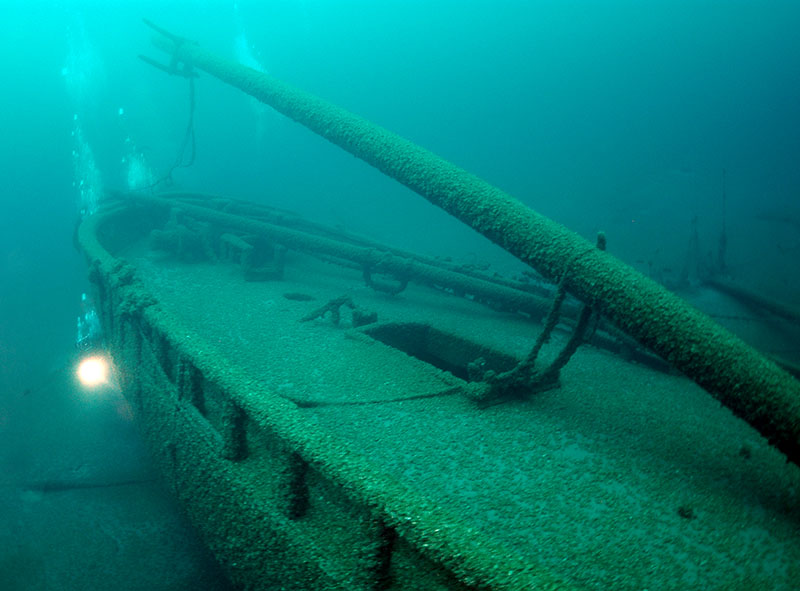Comment period opens on two proposed national marine sanctuaries
The federal government is seeking comments starting Monday, Jan. 9, through March 31 on proposed national marine sanctuaries in Lake Michigan and the Potomac River — the first such designations since 2000.
While the sanctuaries would promote preservation and tourism, shippers and others want to be sure they don’t hinder dredging and ballasting in the Great Lakes.
The National Oceanic and Atmospheric Administration (NOAA) wants to designate a 1,075-sq. mi. area of Lake Michigan adjacent to Wisconsin’s Manitowoc, Sheboygan and Ozaukee counties that holds 37 known shipwrecks. In Maryland, the proposed 52-sq. mi. stretch of the tidal Potomac by Charles County contains more than 100 known and potential shipwrecks, including remains of the ghost fleet built during World War I.

Mallows Bay on the Potomac River is home to more than 100 known and suspected shipwrecks. Marine Robotics & Remote Sensing, Duke University photo.
The Lake Carriers’ Association (LCA) has said it “welcomes the recreational and educational opportunities” a sanctuary may bring, but “what is currently a legal navigational practice should continue to be allowed once the sanctuary is established.”
It is especially concerned about three areas. “Dredging of federal navigation channels in ports, rivers, and their approaches is essential for our ships’ access to dockside customers. Removal of (dry cargo residue) from a ship’s deck is critical for the safety of crew members working on deck. Ballasting is crucial to maintain trim, draft, stability, and structural integrity of a vessel,” LCA wrote last year when NOAA was preparing a draft environmental impact statement.
The Lake Michigan sanctuary would be the second one on the Great Lakes, where a number of other sanctuary nominations are expected. Lake Huron’s Thunder Bay, site of nearly 100 discovered shipwrecks, became a national sanctuary in 2000 and was officially expanded in 2014 from 448 sq. mi. to 4,300 sq. mi.
Sanctuary regulations are specific to each site, according to Ellen Brody, NOAA’s Great Lakes Regional Coordinator. “Some sanctuaries do include restrictions on discharge and dredging,” she earlier told WorkBoat. Thunder Bay does not. Its regulations focus on protecting shipwrecks.
To comment online, go to www.regulations.gov and use docket number NOAA-NOS-2016-0150 for Lake Michigan, and NOAA-NOS-2016-0149 for the Potomac.
NOAA said it will make a final decision on whether to designate the sanctuaries after reviewing the comments.





